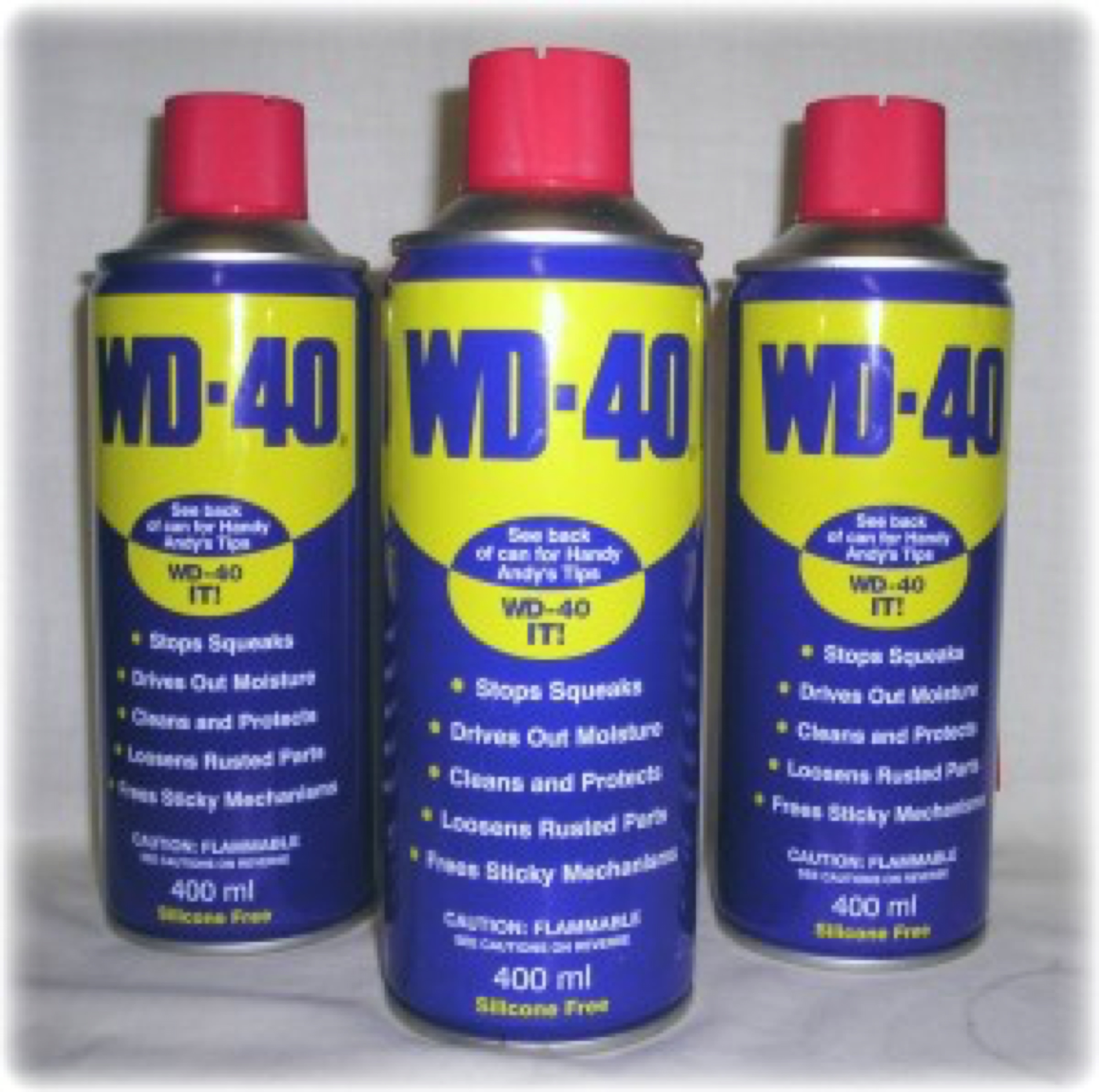32 Safer Uses for WD-40
WD-40 is a nationally renowned product in the US and has been for many years. There are loads of uses and I will list many of these later in this post. However, some of these suggested applications involve putting WD-40 on your skin to prevent arthritis pain in the joints or using as a lure when fishing. I would not be happy about recommending such practices for a product that is petroleum based.
WD-40's formula is a actually a trade secret
The product is not patented in order to avoid completely disclosing its ingredients but WD-40's main ingredients (according to U.S. Material Safety Data Sheet Information) are:- 50%: Stoddard solvent (ie mineral spirits – primarily hexane which is somewhat similar to kerosene)
- 25%: Liquefied petroleum gas (presumably as a propellant – carbon dioxide is now used instead to reduce WD-40's considerable flammability)
- 15+% Mineral oil (light lubricating oil)
- 10-%: Inert ingredients
The German version of the mandatory EU safety sheet lists these safety-relevant ingredients:
- 60-80%: Heavy Naphtha (petroleum product), hydrogen treated
- 1-5%: Carbon dioxide
Here are all the different things for which you can use WD-40
- Protecting silver from tarnishing.
- Removing road tar and grime from cars.
- Cleaning and lubricating guitar strings.
- Restoring and cleaning chalkboards.
- Removing lipstick stains.
- Loosening stubborn zippers.
- Untangling jewelry chains.
- Removing stains from stainless steel sinks.
- Removing dirt and grime from the barbecue grill.
- Removing tomato stains from clothing.
- Keeping glass shower doors free of water spots.
- Camouflaging scratches in ceramic and marble floors.
- Keeping scissors working smoothly.
- Lubricating noisy door hinges on vehicles and doors in homes.
- Removing black scuff marks from the kitchen floor.
- Removing bug guts from the finish on your car.
- Giving a children's playground gym slide a shine for a super fast slide.
- Lubricating gear shift and mower deck lever for ease of handling on riding mowers.
- Lubricating tracks in sticking home windows, making them easier to open.
- Spraying an umbrella stem makes it easier to open and close.
- Restoring and cleaning padded leather dashboards in vehicles, as well as vinyl bumpers.
- Restoring and cleaning roof racks on vehicles.
- Lubricating and stopping squeaks in electric fans.
- Lubricating wheel sprockets on tricycles, wagons, and bicycles for easy handling.
- Lubricating fan belts on washers and dryers and keeps them running smoothly.
- Keeping rust from forming on saws and saw blades, and other tools.
- Removes splattered grease on stove.
- Keeping bathroom mirror from fogging.
- Lubricating prosthetic limbs.
- Removing all traces of duct tape.
- Removing crayon from walls. Spray on the mark and wipe with a clean rag.
- Spraying on the distributor cap to displace the moisture and allow the car to start.
Please remember that this is a petroleum based lubricant and you should wear gloves, safety goggles and be in a well ventilated area when using it.




